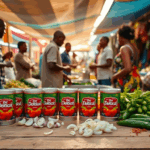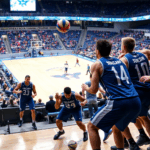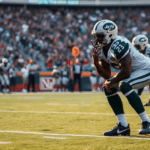Table of Contents
In a world that’s constantly shifting, NATO’s role is being questioned more than ever, especially in light of Italian Defense Minister Guido Crosetto’s recent comments. As countries navigate these evolving geopolitical waters, it’s only natural to wonder: How effective are traditional alliances like NATO? And what about the European Union’s standing on the global stage? This analysis dives into Crosetto’s insights, the implications for NATO, and the changing landscape of international relations.
NATO’s Mission: A Call for Transformation
At a recent conference in Padua, Crosetto put forth a tough critique of NATO, suggesting the alliance lacks a clear purpose in today’s world. He pointed out that the old definitions of power—primarily focused on the U.S.
and Europe—are no longer relevant. Instead, he advocates for NATO to engage with the Global South to tackle modern security challenges. This call for transformation raises important questions: What does the future hold for NATO, and can it still fulfill its mission of ensuring peace and mutual defense?
As NATO gears up for its next summit in The Hague, eyes will be on its commitment to defense spending and collective security.
There’s talk of a potential new target of 5 percent of GDP, primarily driven by pressure from the U.S. But Crosetto’s remarks suggest that simply increasing the budget won’t be enough. A serious reevaluation of NATO’s strategic objectives and partnerships is essential.
Many member states, particularly those worried about Russia’s growing assertiveness, are echoing this sentiment: adapting to new global realities is crucial.
The EU’s Diminished Influence
Alongside his critique of NATO, Crosetto highlighted the European Union’s declining influence on the global stage.
He expressed disappointment that Europe hasn’t unified its political and defense policies, which has limited its effectiveness in international relations. This perspective resonates with a growing number of European leaders who feel that the EU needs to evolve to stay relevant, especially as rising powers like China and India gain more prominence.
Crosetto’s observations about the EU’s fragmented foreign policy reveal a significant challenge for European nations: the urgent need for unity and proactive engagement in global matters. Without a strong collective voice, Europe risks being overshadowed by other nations as they assert their influence. This situation presents a dilemma not just for the EU but also for NATO, as both entities often rely on each other’s strengths to maintain security and stability in Europe.
Shifting Power Dynamics and Future Predictions
The geopolitical landscape is increasingly defined by multipolarity, where power is shared among various global players rather than being concentrated in traditional centers like the U.S. and Europe. This evolution demands a fresh look at the roles of both NATO and the EU in ensuring collective security and tackling global challenges. As Crosetto noted, the world has changed dramatically, and so must the strategies employed by these alliances.
Looking forward, it’s crucial for NATO and the EU to build relationships with emerging powers and adjust their frameworks to address contemporary security threats, such as terrorism, cyber warfare, and climate change. Working collaboratively with nations in the Global South could also bolster global security and foster stability. The future of NATO and the EU hinges on their ability to adapt to these challenges and redefine their missions to align with current realities.
In conclusion, Crosetto’s reflections serve as a wake-up call for both NATO and the EU to rethink their roles in this multipolar world. The need for transformation is evident—both alliances must evolve to remain relevant and effective in navigating the complex challenges of today’s global landscape.




